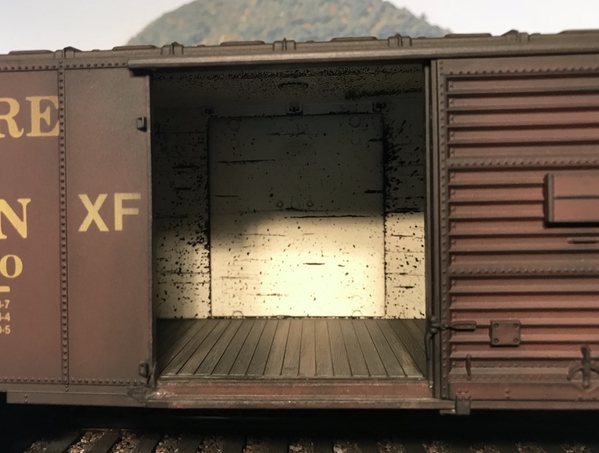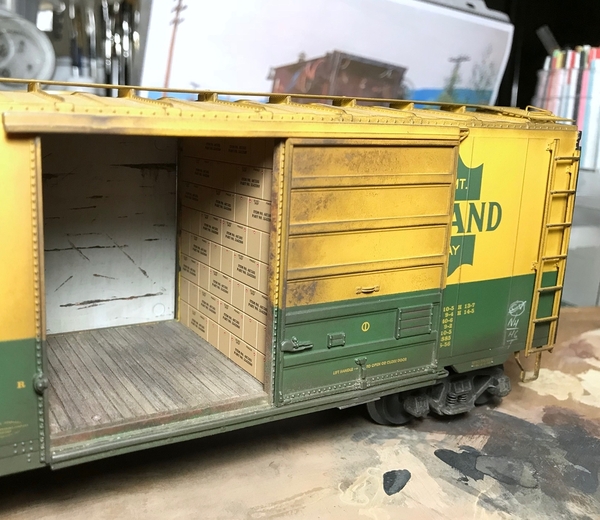@chris a posted:Joe, I really like the "rust effects" on that Maine Central Gondola... So I know it's been over 2 years, but do you happen to remember what you did to achieve that effect. Like you, I am more interested in duplicating "your rust" effect on other items, ie. deck bridges, truss bridges, steel in the scrap yard etc.
I applied a final coat of Pan Pastel "Raw Umber" to this MTH Flat Car, both on the deck and on the sides then found a better location to shoot a photo where the lighting was more forgiving...
Hi Chris...thanks for the kind words. I always enjoy seeing your weathering work, and I think the MTH P-M flat car looks great!
It was actually 8 years ago when I did that MEC gondola (2016), so I may not remember every single detail (such as exact colors used), but I do know the basic concept because I've since adopted it as sort my "go-to" method for achieving rust effects.
Basically I use weathering powders and matte medium. I pour some matte medium into a small artist's paint cup or tray, then stir in a small amount of weathering powder to form a "paint" or paste. What's really cool about this method is that there's actually a texture--or substance--to the rust effect. To me that looks much more realistic than just using brushed or spayed-on rust-colored paint or powder with no texture to it.
It's trial and error to get the correct consistency (but usually more matte medium that powder!) for the desired effect you're trying to achieve. More powder equals a thicker or heavier rust appearance...less powder equals lighter rust. BTW, this effect looks great (and very realistic IMO) on trucks and couplers!
As for application...when doing larger rusty areas, I tend to dab it on with a short-bristled brush rather that using strokes. I use a bigger brush for larger surface areas, and a smaller brush for small areas. Just like other weathering, I mix up different powder/matte medium color mixtures and layer them on. Obviously you don't want a rusty area to be 100% the same color from edge to edge.
When imitating rusty scratches, I use artist's knives and load the thin edge side of the knife with the matte medium/powder mixture and simply transfer it to the surface. You can also load a small amount of the mixture onto an artist's fine sponge and dab on to create some light rusting effects. One example of where I would use these two effects would be on the inside of boxcar doors and walls as shown in the photos below.
Hope this helps explain things a little bit. Please keep us posted here on the Forum if you give this "rust" method a try!






